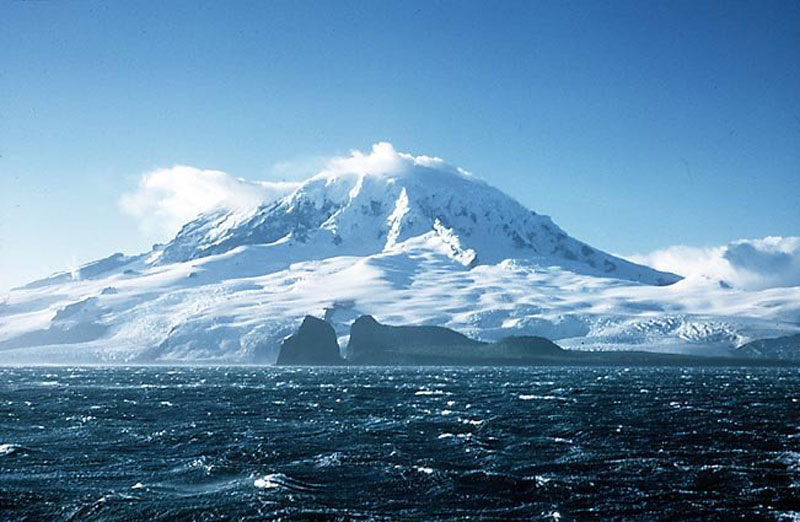Heard and McDonald Islands
Page last updated:27 June 2014
Heard Island and nearby McDonald Islands are located 4100 kilometres southwest of Perth, Western Australia, and about 1500 kilometres north of Antarctica. The islands are home to Australia's only active volcanoes.
Volcanic activity has occurred on Heard Island since the mid 1980s, and activity on McDonald Islands, approximately 43 kilometres to the west, occurred recently during the 1990s. The activity on the McDonald Islands group resulted in the island doubling in size and increasing in elevation by about 100 metres.
Along with the French Kerguelen group of islands 440 kilometres to the northwest, Heard and McDonald Islands form the only exposed parts of the submarine Kerguelen Plateau.
The Kerguelen Plateau is approximately two million square kilometres in area and stands around 3000 metres above the surrounding sea floor. The islands are surrounded by stormy seas caused by temperate waters from the Indian Ocean meeting the icy Antarctic waters.
The extreme environmental conditions mean that most days are cloudy, making it difficult to obtain satellite imagery and photographs of the areas. The rough terrain of cliff-lined coasts and rocky shoals also make access to the islands from the sea very difficult. As a result, only two successful landings have been made on McDonald Islands in 1971 and 1980. Visits to the easier to access and larger Heard Island for scientific research have been much more frequent.
Heard Island is located at 73°30'E, 53°05'S and covers 368 square kilometres. It is approximately 40 kilometres long from east to west and extends 20 kilometres at its widest point. The island is dominated by the active volcano Big Ben. At its summit, Mawson's Peak, rises to 2745 metres above sea level which is 517 metres higher than the highest mountain on the Australian mainland, Mount Koscuiszko at 2228 metres. A second major volcanic cone on the island forms Mt Dixon, which is 700 metres above sea level in the centre of the Laurens Peninsula on the Island's western extremity.
The McDonald Islands are small in comparison to Heard Island with the main feature of the group being only 2.45 square kilometres and rising a mere 230 metres. Located at 72°36'E, 53°02'S, volcanic activity on the principal island during the 1990s has resulted in the obliteration of some landmarks and the creation of new ones. The activity also has resulted in a complete loss of vegetation on the islands.
The Territory of Heard Island and McDonald Islands, which includes the islands and the surrounding ocean to 12 nautical miles, were designated a World Heritage site in December 1997 because of the pristine sub-Antarctic ecosystems and geological activity. That was followed in October 2002 with the declaration of the Heard Island and McDonald Islands Marine Reserve under the Commonwealth Environment Protection and Biodiversity Conservation Act 1999.
Heard Island and McDonald Islands are unique in that they make up the only sub-Antarctic island group which has an intact ecosystem with no known species introduced by humans, ensuring the ongoing evolution of plants and animals in their natural state.
More information is available from the Global Volcanism Program which has regularly updated information about volcanic activity on both Heard Island and McDonald Islands.
